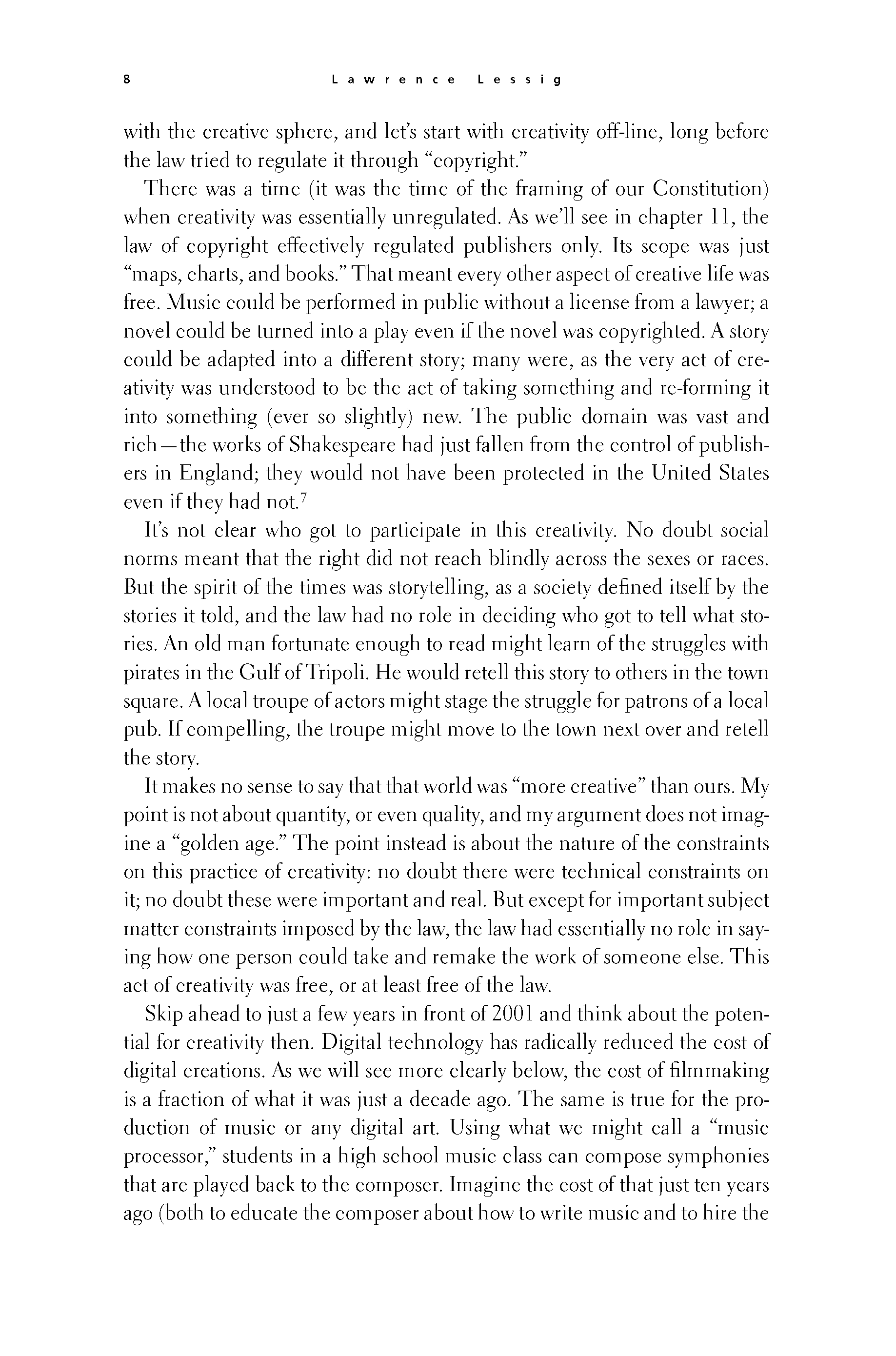 p007 _
-chap- _
toc-1 _
p008w _
toc-2 _
+chap+ _
p009
p007 _
-chap- _
toc-1 _
p008w _
toc-2 _
+chap+ _
p009
with the creative sphere, and let's start with creativity off-line, long before
the law tried to regulate it through "copyright."
There was a time (it was the time of the framing of our Constitution)
when creativity was essentially unregulated. As we'll see in Chapter 11, the
law of copyright effectively regulated publishers only. Its scope was just
"maps, charts, and books." That meant every other aspect of creative life was
free. Music could be performed in public without a license from a lawyer; a
novel could be turned into a play even if the novel was copyrighted. A story
could be adapted into a different story; many were, as the very act of cre-
ativity was understood to be the act of taking something and re-forming it
into something (ever so slightly) new. The public domain was vast and
rich -- the works of Shakespeare had just fallen from the control of publish-
ers in England; they would not have been protected in the United States
even if they had not.[1-7]
It's not clear who got to participate in this creativity. No doubt social
norms meant that the right did not reach blindly across the sexes or races.
But the spirit of the times was storytelling, as a society defined itself by the
stories it told, and the law had no role in deciding who got to tell what sto-
ries. An old man fortunate enough to read might learn of the struggles with
pirates in the Gulf of Tripoli. He would retell this story to others in the town
square. A local troupe of actors might stage the struggle for patrons of a local
pub. If compelling, the troupe might move to the town next over and retell
the story.
It makes no sense to say that that world was "more creative" than ours. My
point is not about quantity, or even quality, and my argument does not imag-
ine a "golden age." The point instead is about the nature of the constraints
on this practice of creativity: no doubt there were technical constraints on
it; no doubt these were important and real. But except for important subject
matter constraints imposed by the law, the law had essentially no role in say-
ing how one person could take and remake the work of someone else. This
act of creativity was free, or at least free of the law.
Skip ahead to just a few years in front of 2001 and think about the poten-
tial for creativity then. Digital technology has radically reduced the cost of
digital creations. As we will see more clearly below, the cost of filmmaking
is a fraction of what it was just a decade ago. The same is true for the pro-
duction of music or any digital art. Using what we might call a "music
processor," students in a high school music class can compose symphonies
that are played back to the composer. Imagine the cost of that just ten years
ago (both to educate the composer about how to write music and to hire the
[[8]]
p007 _
-chap- _
toc-1 _
p008w _
toc-2 _
+chap+ _
p009